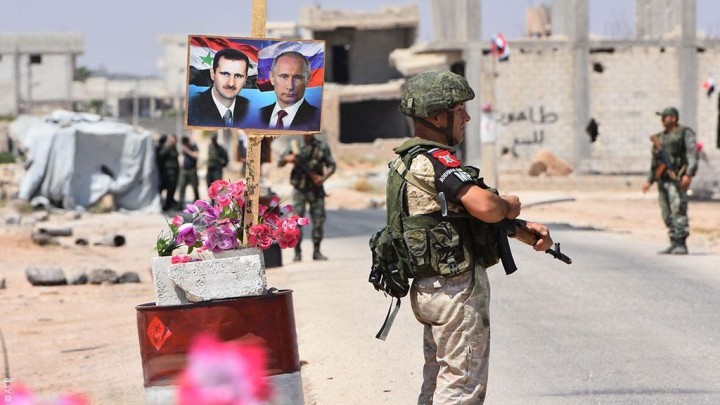
The Russian International Affairs Council (RIAC), a diplomatic think-tank established by presidential decree, has issued a report predicting that Russia, Turkey and Iran will soon reach a joint agreement to remove Syrian dictator Bashar Assad from power, replacing him with a transitional government including members of both the regime and opposition, as well as the Kurdish-led Syrian Democratic Forces (SDF). In its coverage of the report, Russian news agency TASS suggested that Moscow fears a repeat of the “Afghan scenario” in Syria if it continues to back an unpopular regime. It also suggested that Assad is perceived by Moscow as too beholden to Tehran.
There have recently been signs of growing tension between Russian and Iranian forces in Syria, even though they are ostensibly allied behind the Assad regime.
The RIAC reported that a semi-official Russian organization called the Foundation for the Protection of National Values (FZNC) has been conducting an “opinion poll” in Syria, seemingly intended to portray a popular consensus for Assad’s removal. (MEM)
The report comes just as the Assad regime has announced a sharp reduction in fuel subsidies, the latest measure to tackle a deepening economic crisis. (AP) It also comes as Assad is in the midst of a public spat with his cousin and telecom magnate Rami Makhlouf, who took to social media to bash the dictator, if in a whiny and personalistic way. (The Guardian) This all seems to point to a regime beset by fissures and still vulnerable to a potential new upsurge from below.
Contradictions are also becoming more stark in the attempted imperial carve-up of Idlib province, in Syria’s north, where Russia and Turkey have established a buffer zone (“security corridor”) to separate regime and rebel forces. A new ceasefire in Idlib took effect last month, in response to the COVID-19 pandemic, and tens of thousands of displaced persons who fled regime and Russian bombardment have been attempting to return to their homes. But many find their way barred at roadblocks maintained by Hayat Tahrir al-Sham (HTS), the hardline jihadist group that controls much of the province. (Al Monitor)
HTS also faced protests from residents within its areas of control after it opened a trade crossing into regime-held territory. (RTL) This is further evidence that the regime and jihadist forces are closer to each other than either is to the secular civil resistance that continues to exist—in defiance of both.
HTS supporters meanwhile launched a protest of their own, blocking roads to oppose the joint Russian-Turkish patrols of the security corridor. The protests were broken up by Turkish troops—apparently including riot police brought in from actual Turkish territory. (MEM)
Over the past days, Israel has also carried out multiple air-strikes in Syria, mostly targetting Iranian forces. One raid, on an outpost near the Iraqi border in Deir e-Zor governorate, killed at least 14 Iranian-backed fighters. But another apparently struck an actual regime target—a military lab in Aleppo governorate where chemical and biological warfare research was supposedly being conducted. (Syria Direct, Haaretz)
Russia largely controls Syria’s air-defense forces and has been suspected of giving Israel a free hand to strike Iranian forces in the country. The Aleppo raid indicates this accommodation may now have been extended to certain regime targets as well.
Any new order to emerge in Syria from this Great Power jockeying is unlikely to move the country toward democracy. It just may, however, bring us closer to the day that Bashar Assad will finally face international charges for war crimes or even genocide.
Photo via Syria Call




